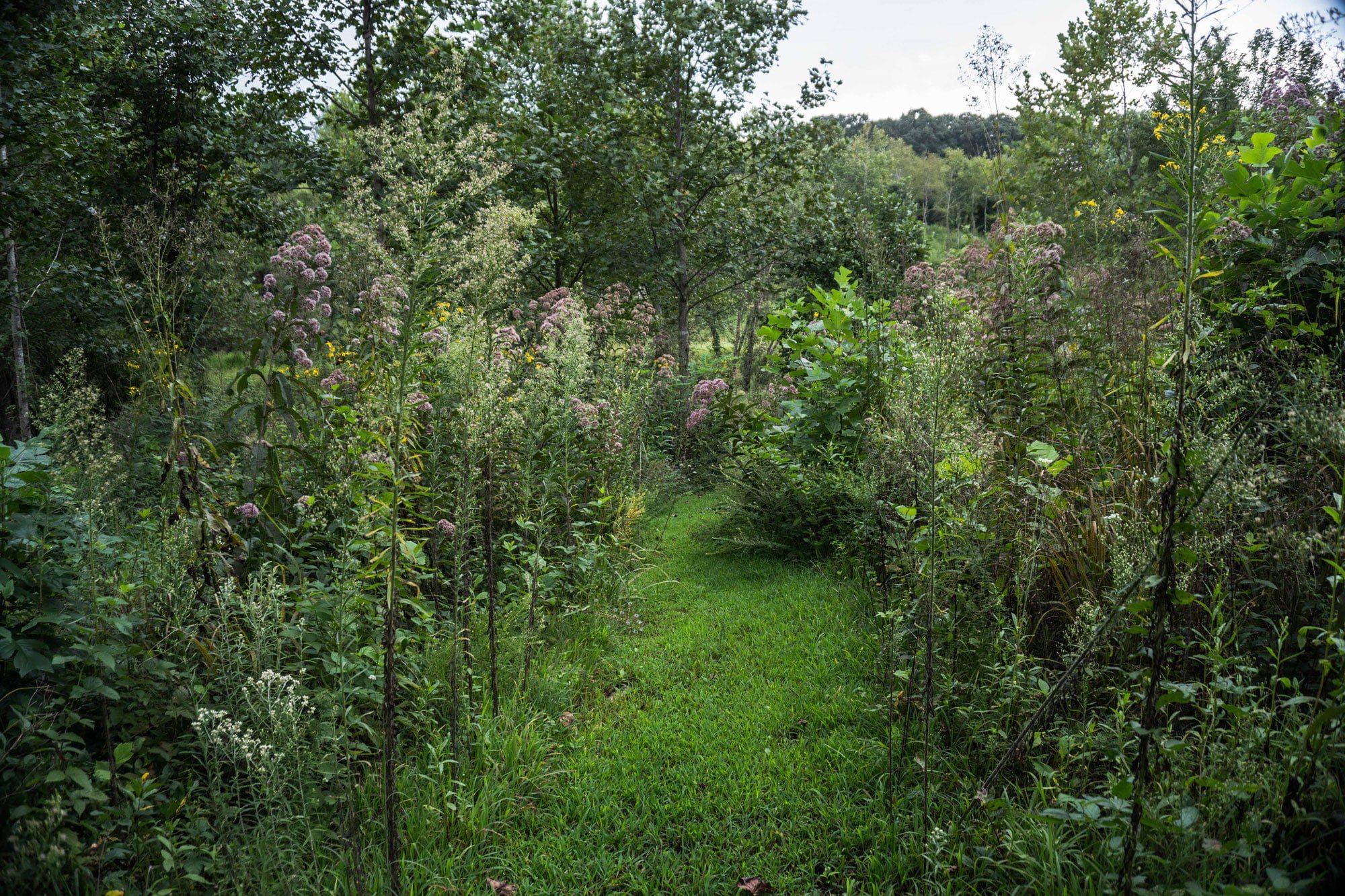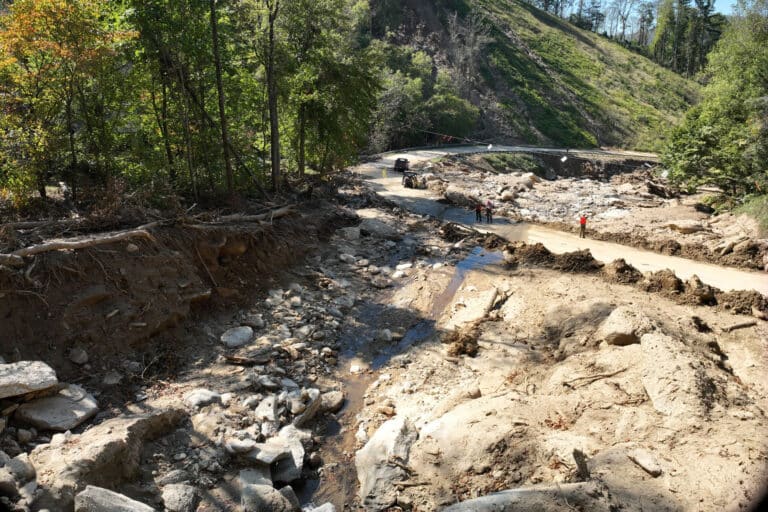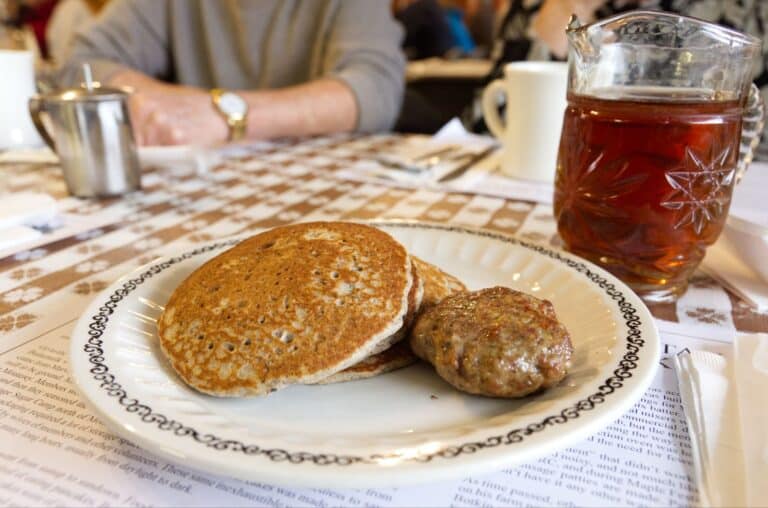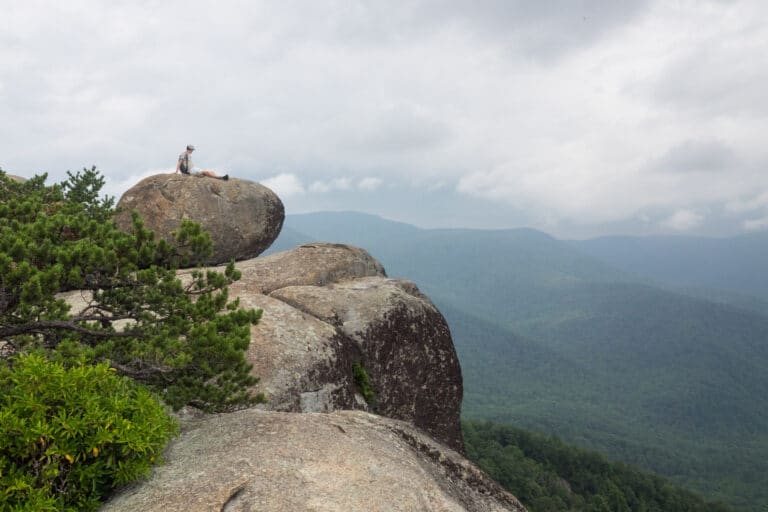With environmental and spiritual benefits, green burial is gaining favor in the region and beyond.
As a student at Warren Wilson College in western North Carolina, Ben Gordon planted, tended, and harvested crops for the college cafeteria until he graduated in 2019. But for the past few years, his job has entailed the planting of an entirely different sort: human corpses.
Gordon is a gravedigger at the Carolina Memorial Sanctuary, a conservation burial ground just south of Asheville. The Sanctuary buries bodies in accordance with green burial practices—no embalming, no vaults, and only biodegradable caskets if one opts for a casket at all. There is also a conservation easement over its 11 acres, assuring that the Sanctuary abides by stringent ecological stipulations to preserve native biodiversity, and soil and water quality.
Gordon was tipped off to the job by one of his Warren Wilson professors and, though the work might sound morbid, his work environment is quite pleasant.
To stroll through the Sanctuary, you’d be hard-pressed to realize that you’re in a graveyard. It feels more like a municipal park. Paths weave through the large wooded acreage, with the occasional meadow and babbling creek cleaving through its center. There’s even a restored wetland. And graves are subtly marked, often by rebar strung with dog tags. Occasional mounds in the earth serve as the only real reminder that humans lie beneath.
Beyond the peaceful setting, green burial plots reduce environmental impact and help restore habitats. The sterilized look of conventional cemeteries requires steady maintenance, including the use of chemicals to scrub headstones, and gasoline for near-constant lawn mowing. Embalming fluids used in post-mortem preparation have proven to be carcinogenic and harmful to funeral workers—not to mention our planet.
In the green burial treatise, “Our Last Best Act,” author Mallory McDuff—the professor who helped Gordon find his job—writes: “Conventional burial containers, from caskets to urns, have a higher carbon footprint than biodegradable ones and can often leach toxic chemicals—such as from stains or varnishes—into the soil and water.”
Cremations are even worse, as they “produce 250,000 tons of carbon dioxide emissions each year, the equivalent of burning 30 million gallons of gas.” Still, cremation remains the style of the day. According to McDuff, over 50% of our population chooses flame cremation, and that number is projected to increase to 80% by 2040.
And then there are the vaults. Although, McDuff says, “no state law requires embalming,” most cemeteries do. They also require vaults: concrete liners for graves, which help keep the ground level for the purpose of maintenance and lawnmowing ease.
With the ongoing effects of climate change established, many people have scrutinized their personal rates of consumption and attempted to reduce their individual impact. Now, some are even ranking their post-mortem carbon footprints.
According to the Green Burial Council, the reviewing body for the Sanctuary and similar establishments, there are approximately 350 green burial cemeteries in the U.S. and Canada. There are a growing number in the Blue Ridge region, including a handful in Virginia and Tennessee. Human composting is also gaining traction in the West, with a bill pending in California. If passed, that state would be the fourth to legalize the practice, joining Colorado, Oregon, and Washington.
“The numbers have gone up, the number of people who say they would consider a green burial,” McDuff says.
McDuff and Gordon are some of these people. McDuff intends to be interred at the Warren Wilson College Cemetery, a tiny graveyard abutting one of the college’s many cow pastures. She negotiated to be buried sans vault and un-embalmed, after convincing the Warren Wilson Cemetery board to waive the stipulation entirely.
Gordon plans for an even simpler sendoff. “I wanna be buried in a shroud,” he says, referring to the option of going into the ground wrapped in nothing but cloth. “That’s my present inclination.”
There’s also a spiritual reason to opt for green burial. Occasionally, the bereaved join Gordon during his daylong digs at the Sanctuary. When they do, the effect is palpable.
“The physicality of it, I think, aids in the grief process,” Gordon says. “The sweating and the exerting and relating of earth and dirt in this service of this person you love. You can tell it benefits people. It’s cathartic.”
Cassie Barrett, director of operations at the Sanctuary, concurs. “When you watch a grave come to a full close, it really helps to integrate ‘this is real.’ You can literally feel the atmosphere shift, no exaggeration. Even if you understand [a green burial] conceptually…you do not understand it until you experience it. A lot of burials we do, the person’s in a shroud, and in that case, you see the form of their body.”
This removal of barriers is just as much a shot in the arm against death phobia—sort of an existential immersion therapy—as it is an ecological practice. Gordon, McDuff, and Barrett comprise a portion of a growing community. Each are hopeful that more people will be called to practice green burial—first as facilitators and, eventually, as clientele. To hear them tell it, no work may be more important.
“How we relate with [death] is foundational to how we relate with truth on a personal and a cultural level,” Gordon says. “Death is the truest thing about us.”
Cover Photo: Photo courtesy of Carolina Memorial Sanctuary








